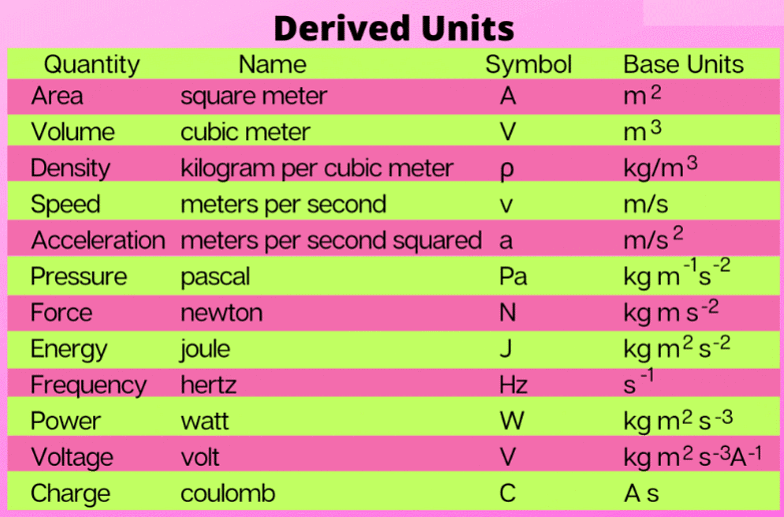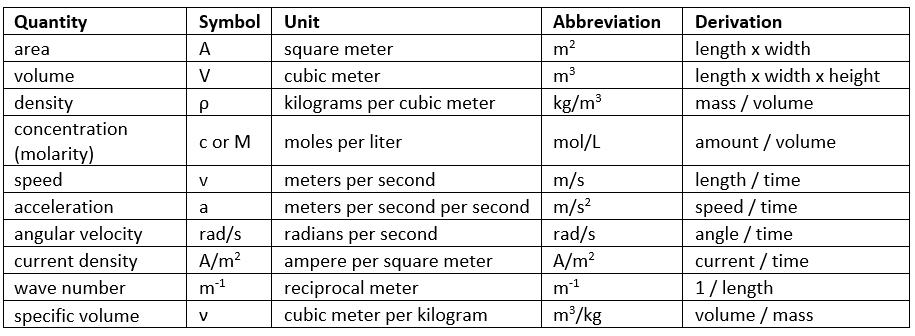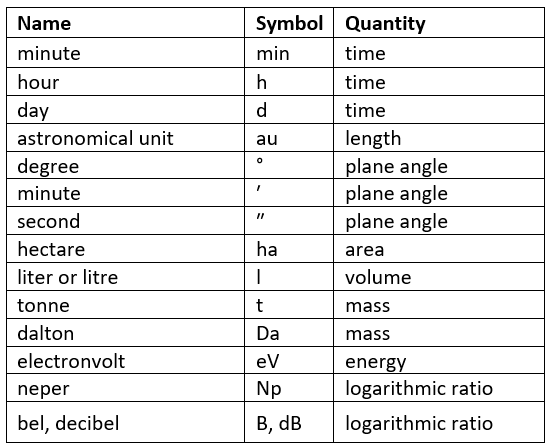What are Derived Units? | Physics for Grade 12 PDF Download

A derived unit is a unit of measurement in the International System of Units (SI) that is derived from one or more of the seven base units. Derived units are either dimensionless or else are the product of base units.
Derived Unit Names and Symbols
The names of the derived units are all written using lowercase letters. Most of the names are just combinations of base units, but there are 22 derived units with special names. The symbols for units named for persons begin with an uppercase letter.
Examples of Derived Units
For example, the watt, hertz, and coulomb are derived units named for people. Their symbols are W, Hz, and C, respectively. Other examples of derived units include meters per second (m/s), cubic meters (m3), and joule per kelvin (J/K).
How Many Derived Units Are There?
There are 22 derived units with special names, including the dimensionless derived units the radian (rad) and steradian (sr). However, there are over 100 other derived units that are expressed in terms of their base units.
Derived Unit List
Here are the 22 derived units with names:
Derived Units and Dimensional Analysis
Many other derived units are mathematical combinations of SI base units, just without special names. Here are some examples:
Note that many derived units lack special symbols.
Use dimensional analysis when deriving units and converting them to other units. Squaring or cubing units, as in area and volume, means you also square conversion factors.
For example, converting cubic meters to cubic centimeters:
(100 cm / 1 m)3 = 100 cm3 / 1 m3 = 1000000 cm3 / 1 m3
Avoid the common mistake of thinking there are 100 cm3 per 1 m3 just because there are 100 cm in 1 m!
Who Can Make a Derived Unit?
There are so many derived units that you might think anyone could make one up, providing they use the base units as a starting point. But, a unit only comes into being if it is published in The International System of Units (SI).
The General Conference on Weights and Measures (CGPM) manages the International System of Units (SI or metric system) and makes recommendations to the International Committee for Weights and Measures (CIPM). The International Bureau of Weights and Measures (BIPM) periodically reports updates to the unit list and definitions.
Non-SI Units
The metric system also includes several units which are neither base units nor derived units. These units exist within the metric system either because they are multiples or fractions of SI units or else they are practical.
The permitted non-SI units are: Several permitted units in the 8th SI brochure did not make it into the 9th brochure. Among these are the bar (pressure), mmHg (pressure), ångström (length), and gauss (magnetic flux density).
Several permitted units in the 8th SI brochure did not make it into the 9th brochure. Among these are the bar (pressure), mmHg (pressure), ångström (length), and gauss (magnetic flux density).
|
142 videos|312 docs|132 tests
|




















